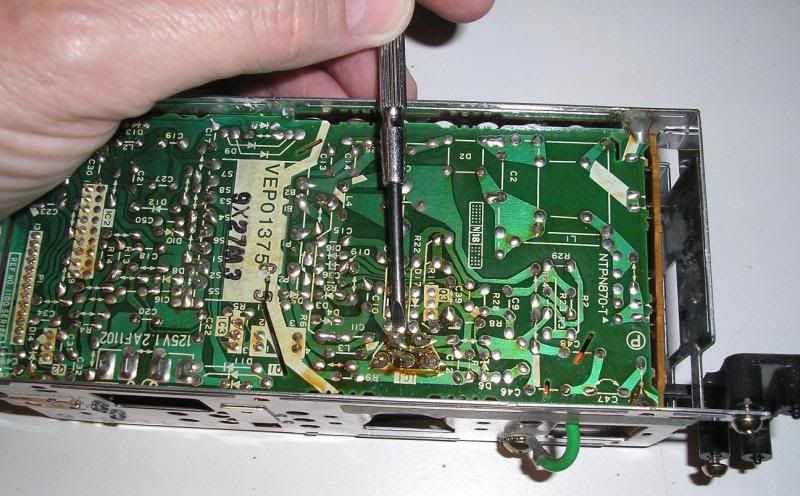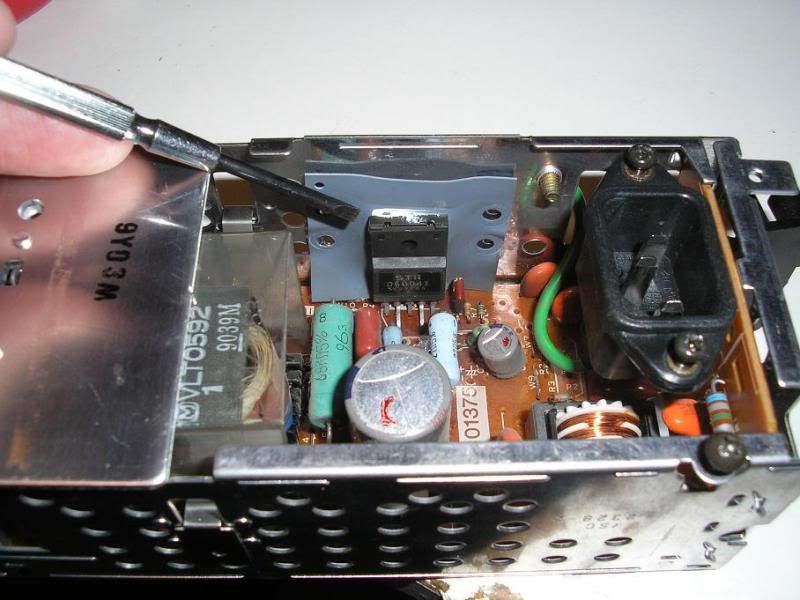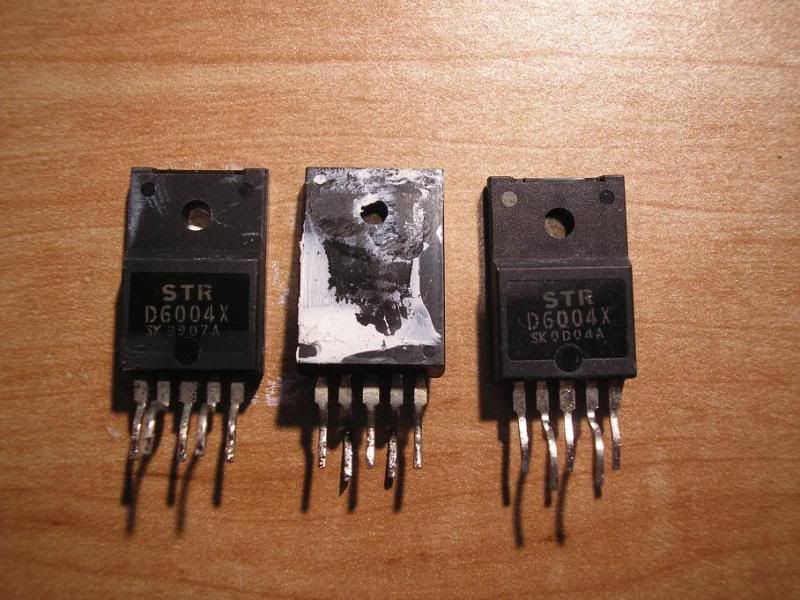Hey folks,
Been a few weeks since I've been on, took a vacation to visit MOM, and HS best friend in Texas and such, then just took some time OFF from the "site" to further recharge the brain cells!
Anyways, I have 2 professional grade editting VCR's that I "acquired" from my previous employer when he retired, they are Panasonic AG-1960's, decent decks. But last year, 1 of them died....blew 240V volt fuse, not the 110V one. Replaced it and it immediately blew when plugged in. Then this year, the second one died, same way, same symptoms.
Searched the "NET", found a VCR repair newsgroup listing/digest, talked about a voltage regulator that often fries, they described it with 5 pins to the circuit board, but all had dark brown look to the solder joints, like they had gotten overheated. They replaced this component along with a LARGE capacitor, and theirs was working again.
So..I took mine apart, pulled the Power Supply, found the same regulator chip, 5 pins, with heat sink conductive paste on it to a ?rubber? heatsink plate. Found model #... STR D6004X, found site on line that supplied them, only $3.99 ea, got 3 because of $10.00 min. order. Desoldered old ones, put new ones in with fresh thermal paste and VIOLA, the units powered back up, and seemed to run fine. However, after 15 minutes, they powered OFF, then after a cooling period would power back up again, so looks like an overheat protection circuit in the regulators??
I did NOT replace the large Capacitor because it didn't look SWOLLEN or blown? However, the newsgroup digest talked about ESR values for it being out of spec? I don't know or have an ESR gauge, or how to use one??
There is a VCR repair place just a mile from my house. I'm tempted to take the Power Supply there, and see if they could do the ESR test on the capacitor or such to see what other component apparently needs replacing to prevent the overheating of the voltage regulator that I installed!?
Here are a few photos of the power supply, circuit board, voltage regulator component, etc.! Any electronics GURU's out there with any hints? I don't have a schematic, but wouldn't know how to read it anyways, I'm lucky to be able to follow basic +/- paths, but not caps, resistors, IC's etc.!
T.C.



Been a few weeks since I've been on, took a vacation to visit MOM, and HS best friend in Texas and such, then just took some time OFF from the "site" to further recharge the brain cells!

Anyways, I have 2 professional grade editting VCR's that I "acquired" from my previous employer when he retired, they are Panasonic AG-1960's, decent decks. But last year, 1 of them died....blew 240V volt fuse, not the 110V one. Replaced it and it immediately blew when plugged in. Then this year, the second one died, same way, same symptoms.
Searched the "NET", found a VCR repair newsgroup listing/digest, talked about a voltage regulator that often fries, they described it with 5 pins to the circuit board, but all had dark brown look to the solder joints, like they had gotten overheated. They replaced this component along with a LARGE capacitor, and theirs was working again.
So..I took mine apart, pulled the Power Supply, found the same regulator chip, 5 pins, with heat sink conductive paste on it to a ?rubber? heatsink plate. Found model #... STR D6004X, found site on line that supplied them, only $3.99 ea, got 3 because of $10.00 min. order. Desoldered old ones, put new ones in with fresh thermal paste and VIOLA, the units powered back up, and seemed to run fine. However, after 15 minutes, they powered OFF, then after a cooling period would power back up again, so looks like an overheat protection circuit in the regulators??
I did NOT replace the large Capacitor because it didn't look SWOLLEN or blown? However, the newsgroup digest talked about ESR values for it being out of spec? I don't know or have an ESR gauge, or how to use one??
There is a VCR repair place just a mile from my house. I'm tempted to take the Power Supply there, and see if they could do the ESR test on the capacitor or such to see what other component apparently needs replacing to prevent the overheating of the voltage regulator that I installed!?
Here are a few photos of the power supply, circuit board, voltage regulator component, etc.! Any electronics GURU's out there with any hints? I don't have a schematic, but wouldn't know how to read it anyways, I'm lucky to be able to follow basic +/- paths, but not caps, resistors, IC's etc.!
T.C.



 put one in backwards and it will go
put one in backwards and it will go  Radio shack should have the caps, and I would replace the smaller one as well, just to be sure. DO check that the voltage on the new cap is at least as high as the voltage on the old cap.
Radio shack should have the caps, and I would replace the smaller one as well, just to be sure. DO check that the voltage on the new cap is at least as high as the voltage on the old cap.




Comment